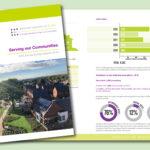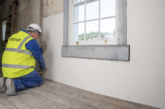Council-owned housing companies ramped up their new-build housing targets by more than 70% in the space of just 12 months, a survey published by the National Federation of ALMOS (NFA) reveals.
“While it’s impossible to say whether they will now be able to fulfil those targets, the figures show that these council-owned companies already have the experience and the ambition to dramatically scale up building of affordable rented housing, if they get the right support,” said Eamon McGoldrick, Managing Director of the National Federation of ALMOs.
“And our members believe this is exactly what the country will need to meet the explosion in housing need they are expecting when the coronavirus crisis is over.
“Savings will have been spent, jobs lost and homes put in peril. Many of those in real difficulty will be the low-paid ‘essential’ workers whose efforts have seen us through this crisis. We must not let them down. Buying or shared purchase will be beyond the means of many.”
The National Federation of ALMOs’ annual survey asks England’s 30 council-owned housing management organisations how many new homes they plan to build over the next five years. In December 2018, when the Housing Revenue Account had been lifted only a few weeks before, the total target was 7,265. Last December, it was 12,352.
The leap shows that the lifting of the HRA cap, combined with a more stable policymaking environment, was beginning to bear fruit. However, the erosion of stock through Right to Buy sales has continued. While ALMOs built or acquired 1,961 homes last year, 2,348 were sold.
“Even before the pandemic, there were already other increasing and pressing demands on HRA funds — building safety work, extra staff costs to lessen the impact of welfare reform, and rising homelessness,” said Eamon.
“We are still waiting for the Social Housing White Paper, a response to the Right to Buy consultation, and clear proposals for building safety reform that will make it possible to predict the future costs involved. All will have implications for how much money is in the HRA pot — and that’s before we understand the full cost of the COVID-19 crisis.
“Perhaps the most important pillar of our national response to that will be how we tackle housing need. Precious public money will have to be spent in a way that both kick-starts the economy and spreads the benefit as widely as possible.
“Research shows that every £1 invested in construction stimulates close to £3 in economic output and generates more than 50p of tax revenue. When local authorities build, much of that money remains in the local economy through job creation, support of local suppliers and wages spent in the community. Bruised private sector construction companies will be reluctant to build — and ALMOs are ready to be a key part of the solution.”
To download a copy of the ‘Serving our Communities NFA Annual Survey Results 2019 click here.









